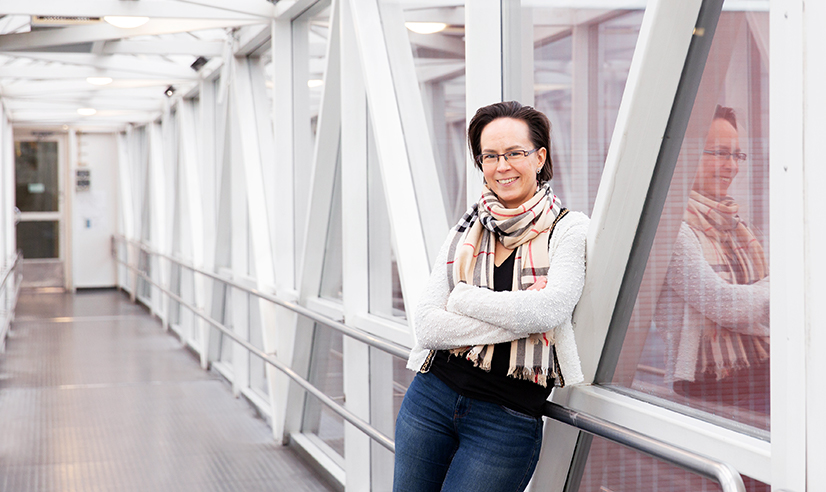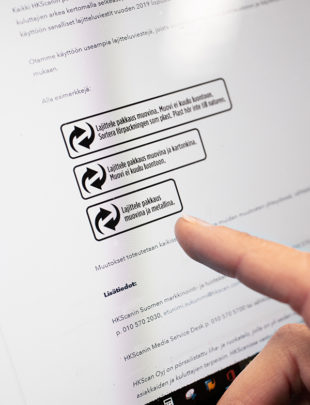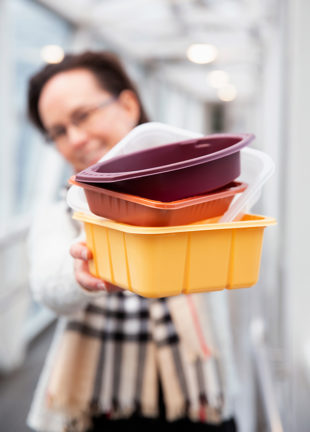HKScan to offer sorting advice in plain language

Should packaging have arrows and triangles or verbal instructions? HKScan thinks the latter.
“The triangles that you currently find on packaging do not instruct consumers about sorting but about the materials that the packaging contains. Many people are not exactly eager to sort packaging if they find sorting too much like hard work and the symbols difficult to understand. Plastics can end up in mixed waste if people do not know what the symbol with ‘07’ inside a triangle means, for example,” says HKScan’s Packaging Specialist Mari-Annika Mattsson.
To alleviate consumer anxiety and make everyday life easier, HKScan has decided to abandon the symbols. Consumers can now immediately read from the packaging which sorting container each packaging goes into instead of trying to figure this out based on the symbols.
“We will use different sorting messages and choose the most suitable one according to the size of the packaging and the printable surface available. The messages will include “Sort as plastic”, “Sort as plastic and cardboard” and “Sort as plastic and metal,” Mattsson explains.
Verbal sorting messages will be printed on the first packaging later this year, and the products will be on shelves from January, depending on stock and demand.
Streamlining practices
The team at HKScan spent a long time thinking about updating the sorting guidelines printed on packaging.
HKScan in Sweden has long been using plain-language sorting instructions, and the results have been encouraging. Mattsson says the company’s aim is to extend verbal instructions to all the countries where it operates. This will, of course, depend on each country’s legislation, local practices, willingness and recycling facilities.
HKScan in Sweden has long been using plain-language sorting instructions, and the results have been encouraging.
“Sorting operations in Sweden are arranged much in the same way as in Finland, while Denmark lags behind the other Nordic countries in terms of what is sorted and how. We follow local practices in every country. Individual companies are dependent on each region’s particular waste management policies,” Mattsson points out.
Food waste is the biggest problem
The main purpose of food packaging is to protect the product and reduce food waste, to keep the product safe and edible at least until the best before date.
“If even a slice of ham is left uneaten, the impact of that slice on the environment is greater than that of the packaging that the ham is wrapped in. Food waste is a bigger problem than generating packaging waste. The best thing to do eco-wise is to use all the contents of a packaging, as then the energy used to make and pack the product is not wasted.”
Plastic is often an ideal material for food packaging due to its properties. Mattsson says that HKScan’s food packaging is constantly improved through measures such as using thinner plastic. The company will also give up using black plastic in food trays in December.
“Plastics have developed so rapidly in recent decades that less is now needed to protect food products’ shelf life. For example, the Sininen Lenkki sausage – perhaps our most famous product – is now packed in plastic that is 41 percent thinner than 40 years ago. In less than 20 years, the amount of material used in our minced meat trays has been reduced by as much as 56 percent. Relative to the amount of plastic we use, these figures are huge,” says Mattsson.
The collection of plastic packaging waste from households only started in Finland in 2016. The EU’s target rate for plastic packaging recycling is 50 percent by 2025.
“I am sure that people will learn to recycle more packaging materials and that this will result in more efficient reuse. We will, however, also need to see changes in legislation and recycling processes,” says Mattsson.

